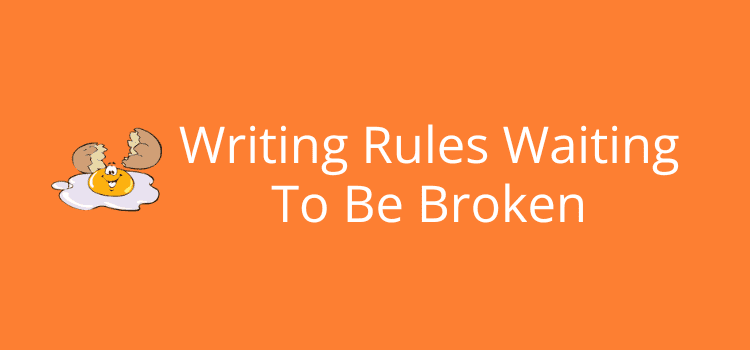
One of the easiest ways to improve your writing is to learn about the six defined yet different writing styles.
When you understand the differences between each one, they will help you decide on word choice, sentence structure, and formality.
In other words, you can maintain a specific style to suit any particular piece of writing to help you engage with your readers by meeting their expectations.
A fiction author writes in a different style than a recipe blogger, an article writer, or a political commentator. But each one uses one or more of the basic styles.
The six writing styles
There are six basic styles of writing.
- Descriptive
- Expository
- Persuasive
- Narrative
- Poetic
- Technical
These different styles don’t belong to any single type of genre.
You can find a mix of any of them in fiction and nonfiction.
You might stay in one style for a blog post or article writing.
However, you don’t want to tie yourself to one particular style for most creative writing.
But you should be selective when you use one or more than one.
The choice might depend on your point of view.
Or perhaps on a specific piece or passage where you want to use other literary devices.
Let’s take a quick look at each style and see how you can apply them to your work.

1. Descriptive
Logically, descriptive style describes things, places, or people. It is usually rich in adjectives and adverbs and often uses similes and metaphors.
You can use this style in many forms of creative writing. Fiction, poetry, and short stories are typical examples of writing that use this style.
Common uses:
- Fiction novels
- Plays
- Songs
- Poetry
- Diaries
- Nature descriptions
2. Expository
The expository writing style is when you inform your readers about the facts. You are not trying to convince them, but you want to draw attention to something that is proven and undeniable.
For instance, there are 50 states in the USA, but only four start with an A. The highest mountain in Europe is Mont Blanc, which is 4,808 meters or 15,776 feet high. You would use this style in informative articles, nonfiction, cookbooks, or textbooks.
Common uses:
- Textbooks
- How-to articles
- Recipes
- Technical, business, or scientific writing
- News stories
3. Persuasive
Persuasive writing naturally implies that it will include the author’s opinions. You want to win over your readers to your point of view or explain a concept.
You build an argument and try to persuade readers towards your opinion that you back up with solid arguments or proof.
The natural uses of the persuasive style of writing would suit a CV or business cover letter. It would also be suitable when explaining why someone should vote for a candidate in an election.
You might use this style if you write an opinion piece, a product review, or perhaps even an academic paper. You could also use it to support a cause in which you believe.
Common uses:
- Resumès and cover letters
- Letters of recommendation
- Product reviews
- Advertising
- Letters of complaint
- Newspaper articles
4. Narrative
The narrative writing style is the traditional writing technique for fiction authors.
The main element is the plot, which the author narrates from the beginning through the middle and concludes at the end.
It is the voice of the author, but they can complement it with a lot of descriptive writing style.
The uses are primarily for fiction. But you can use it in many forms of creative writing, content marketing storytelling, and biographies.
Common uses:
- Novels/Novellas
- Poetry (particularly epic sagas)
- Short stories
- Anecdotes
5. Poetic
It is a broad area of style. But it can generally be defined as using rhyme, rhythm, and meter to convey a story or emotional feeling or sensation.
It is, of course, a unique style for pure poetry. But you can also use it in fiction.
Common uses:
- Novels
- Poetry
- Plays
- Short stories
6. Technical
Technical writing is to the point and factual about a specific purpose.
It is about writing on a precise subject and using facts, figures, and guidance that are unemotive to inform and instruct readers. It is common to use the imperative to explain a series of actions.
You would use this style for instruction or user manuals, analysis reports, or perhaps even press releases.
Common uses:
- Textbooks
- User manuals
- Medical articles
- Technical or scientific writing
Can you mix and match?
You shouldn’t get locked into using one form for one piece of writing.
There is no reason why you can’t use expository, descriptive writing to inform. But at the same time, use poetic descriptive elements.
You will almost always use passages of description in narrative writing, perhaps even the persuasive style.
The key is to understand what style you are using and when it is appropriate and beneficial for you.

What is a writer’s style?
Every writer or author has a particular and unique style or voice that they use to personalize any of these defined styles.
A writer can use five primary areas of style to individualize their writing.
Mood
It is the feeling or atmosphere writing creates for a reader. The mood is created through the use of setting, theme, voice, and tone.
Some examples are romantic, optimistic, pessimistic, gloomy, sorrowful, serious, humorous, angry, or cheerful.
Tone
The tone in writing is the author’s attitude about the subject matter.
It might be quite negative, short, and sharp if they don’t like or disagree with something.
But it will be longer and more positive if they like what they’re writing about.
Wordiness
It is when your writing or narrative uses long, complex, or run-on sentences instead of short and concise sentence structures.
Word choice
Some writers use long and more complex words, while others use shorter and simpler vocabulary choices.
Your word choice can help readers understand more about your perspective.
Syntax
Syntax in writing means the way words and sentences are put together.
In English, syntax usually follows a pattern of subject-verb-object agreement.
However, authors often experiment with this to achieve a more lyrical, rhythmic, rhetorical, or questioning effect.
Formal or informal?
On top of your choice of style, you should also maintain consistent formality.
In writing and speaking, it is defined as a language register, which is a set of rules that determines and controls the various levels of polite and familiar language.
Mixing informal and formal or, worse, vulgar register will confuse or confound readers.
Summary
You don’t need to tie your writing to any one style or form.
The art of good writing is in finding a balance that will appeal to your target reader.
When you think about how a reader will react to your writing, you can then craft your message or narrative elements to suit.
The characteristics noted in this article include the most common types of writing styles.
They are a guide for you and are definitely not rules that you have to follow.
However, they can give you a better sense of direction and purpose when you write.
Related reading: Grammatical Moods In Writing Are Not Related To Feelings




Interesting and informative blog! Thanks for sharing!